




-
Application
- Industry
- Heating industry
- Individual solutions
- Law regulations
- Certification
- Research and development
- Public perception
- Investment map
-
Transport
- Hydrogen buses
- Hydrogen trains
- Special vehicles
- Law regulations
- Certification
- Research and Development
- Public perception
- Investment map
-
Production
- Technology
- Green hydrogen from Renewable Energy Sources
- Grey hydrogen
- Hydrogen production from biomass
- Law regulations
- Certification
- Research and development
- Public perception
- Investment map
-
Transmission, Storage



Cookies
Informujemy, iż w celu optymalizacji treści dostępnych w naszym serwisie, dostosowania ich do Państwa indywidualnych potrzeb korzystamy z informacji zapisanych za pomocą plików cookies na urządzeniach końcowych użytkowników. Pliki cookies użytkownik może kontrolować za pomocą ustawień swojej przeglądarki internetowej. Dalsze korzystanie z naszego serwisu internetowego, bez zmiany ustawień przeglądarki internetowej oznacza, iż użytkownik akceptuje stosowanie plików cookies. Czytaj więcej Polityka prywatności
Transport
Vessels propelled by hydrogen are a chance for environment
In the battle for the top spot for the most polluting vehicles on the Old Continent, it is ships that take pride of place. A report published by the European Environment Agency and the European Maritime Safety Agency leaves no illusions - it is time to bet on low- and zero-emission shipping. Hydrogen may be the solution to reduce emissions.According to the report, maritime and inland waterway shipping accounted for as much as 13.5% of greenhouse gas emissions from transport in the EU in 2018. While in terms of CO2 emissions globally maritime transport is responsible for around 3-4% of emissions, already in terms of nitrogen oxides and sulphur production the figure is 18-30% and 9% respectively. Currently, as much as 77% of external trade and 35% of trade between EU Member States takes place by sea. Although shipping has decreased in intensity in 2020 due to the coronavirus pandemic, this form of transport will continue to grow and with it the demand for greener solutions.
Already in 2005, Icelandic New Energy investigated the use of fuel cells on vessels from the Norwegian DNV group as part of the project 'New H Ship - Assimilation of Fuel Cells in maritime applications'. Funded by the Cordis programme, the studies showed that there were no technical, social and infrastructural obstacles to the implementation of hydrogen in maritime transport. The challenges were H2 storage due to the relatively low energy density of the gas and, for longer voyages, taking all the fuel on board.
Ammonia or LOHC (liquid hydrogen carriers) produced from hydrogen can also be an alternative to hydrogen cells in waterborne transport. Although the conversion of hydrogen to ammonia results in energy losses, it is nevertheless more cost-effective than liquefying H2. According to Yara, combining hydrogen in gaseous form with nitrogen results in a loss of only 13.1% of energy. In contrast, when recovering hydrogen from ammonia, the loss is 10% of the primary energy contained in the gas, giving a total efficiency of 76.3%. By comparison, liquefying hydrogen alone is said to result in a loss of 43.5% of energy, and storing it 2.3%. According to Yara, this means that ammonia has a chance to prove itself, especially on routes above 1,500km.

Efforts are therefore first focusing on smaller vessels or those that call at ports more frequently. As part of the European Flagships programme worth.
The European Flagships programme, worth EUR 7 million, will build two zero-emission ships. The race to become the first hydrogen-powered ferry was won by MF Hydra, which went to Norwegian carrier Norled in July 2021. The ferry will serve the Hjelmeland-Skipavik-Nesvik route once ... hydrogen deliveries from the Linde electrolyser in Leuna, Germany, start. The ship, built by the Westcon shipyard, can take 300 passengers and 80 cars. It is powered by two 200 kW fuel cells and has a tank capacity of 80 m3.
Second place on the podium in the zero-emission ferry category has to settle for Switch Maritime's American Sea Change launched in August 2021. The ferry, carrying 75 passengers, will operate in the Gulf of California after sea trials. The propulsion system of the new ferry consists of Zero Emissions 360 kW hydrogen cells and Hexagon tanks that will hold 246 kg of hydrogen.
Another hydrogen vessel developed under Flagships will go to Compagnie Fluviale de Transport (CFT) of Paris. It will be a fuel cell-powered cargo barge. The 50% hydrogen is to come from electrolysis using renewable energy. After sea trials, the barge will distribute goods on the Seine, in the Paris metropolitan area.
The Dutch partnership Rhine Hydrogen Integration Network of Excellence (RH2INE) is also working on the implementation of hydrogen in inland navigation. The project aims to have 10 hydrogen-powered barges running between the river ports of Rotterdam, Duisburg, Düsseldorf and Cologne by 2024.
Hyundai has also joined the shipbuilding game and wants to bring small zero-emission marine vessels to market by 2022. In future, the corporation will also develop and introduce propulsion systems for larger vessels.
Polish companies are also interested in implementing hydrogen technologies in shipbuilding and water transport. Among the signatories of the hydrogen agreement are Gdańska Stocznia Remontowa, Remontowa Shipbuilding, Forum Okrętowe, Polish Register of Shipping, ProjMors, Institute of Fluid-Flow Machinery of the Polish Academy of Sciences and the Port of Gdynia. As Jarosław Wróbel, Lotos Group Vice-President for investments and innovations, told gospodarkamorska.pl, the company is preparing to build ship refuelling stations in the Martwa Wisła port, which is currently under construction.
According to New H Ship's calculations, ships weighing 100 tonnes, which go to sea for less than a week, could use hydrogen to power the main propulsion unit. Larger ships that stay at sea longer require more energy for propulsion and to power on-board equipment. Here, the solution could be to improve hydrogen storage techniques or to use it as an auxiliary unit in the first place.
https://www.gospodarkamorska.pl/wodor-na-statku-lekcja-dla-polski-59976
https://cordis.europa.eu/article/id/26826-hydrogen-on-the-high-seas/pl
https://www.portalmorski.pl/zegluga/42666-pierwszy-na-swiecie-statek-rzeczny-napedzany-wodorem
https://www.offshore-energy.biz/worlds-1st-hydrogen-powered-ferry-delivered/





